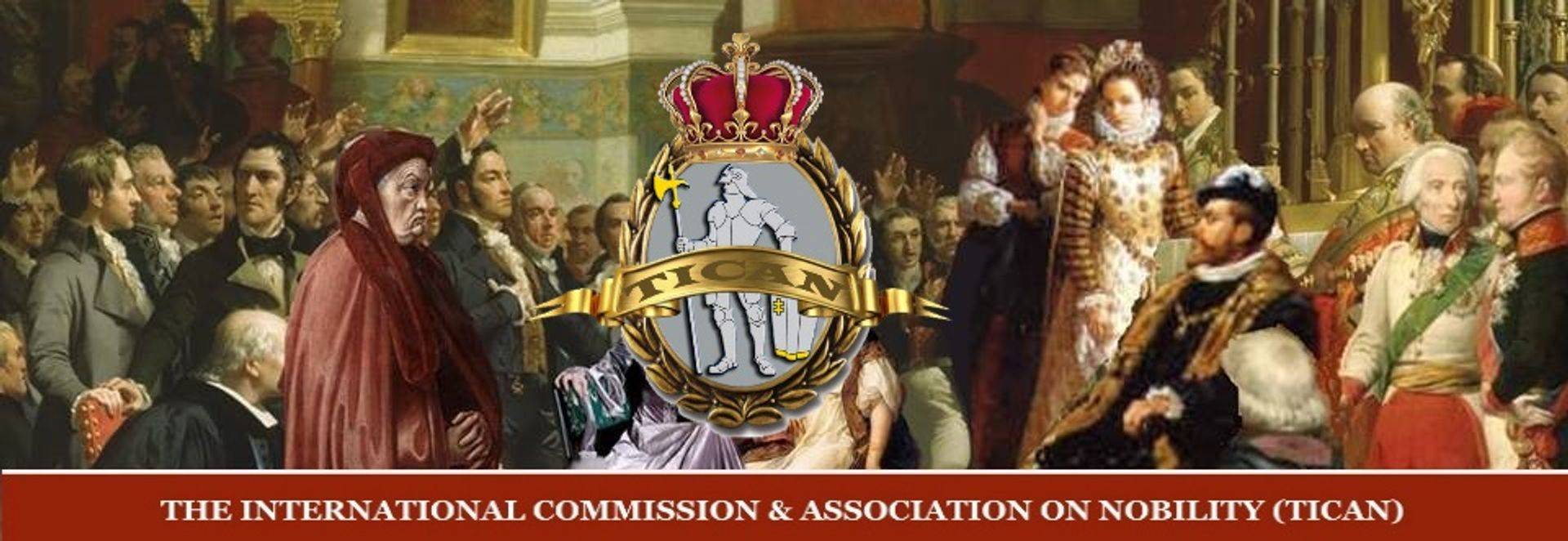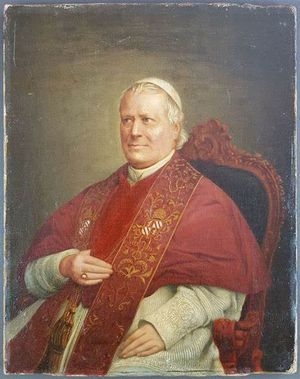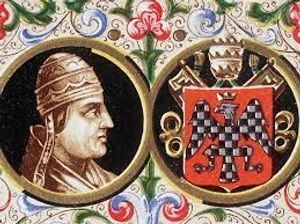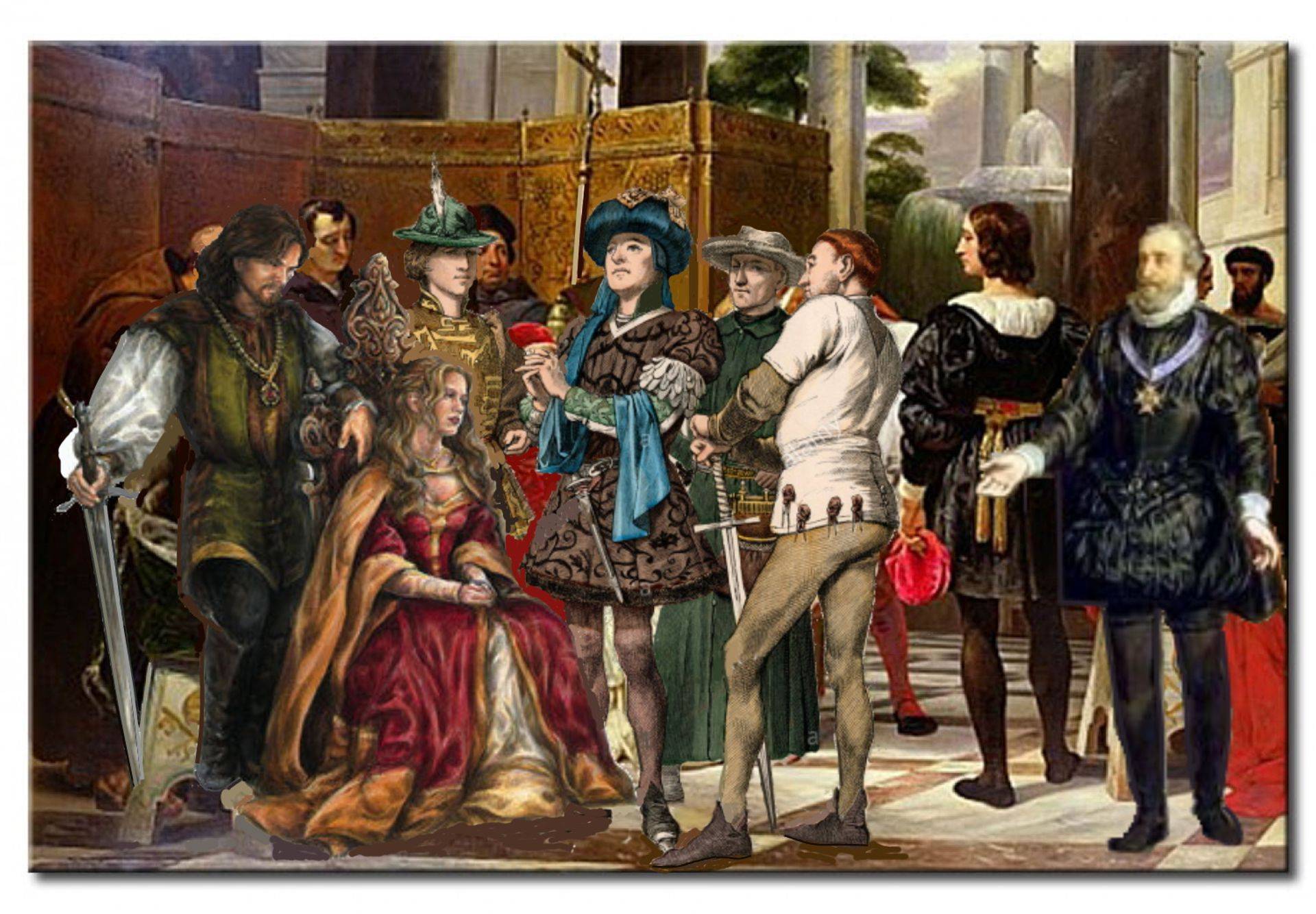
Title
Before the political unification movement that occurred during the 19th century in Italy, the titles of nobility were granted by each of the sovereigns who exercised their power over the various parts of the Italian territory: emperors of the Holy Roman Empire, kings of Spain, of the Two Sicilies, of Sardinia, Grand Dukes of Tuscany, Dukes of Parma, Doges of Venice and Genoa and, mainly, the Popes, who continued to grant them after the de facto extinction of their temporal sovereignty in the old Papal States.
Italy's nobility reflects the fact that medieval Italy was a scene of separate states until 1870 and had several royal lineages. Italian royal families were usually related to each other through marriage, and even to other European royal families.
Sovereign Houses of Italy
House of Savoy: Kings of Italy, Kings of Sardinia, Dukes of Savoy, Princes of Piedmont
House of Este: Dukes of Ferrara, Modena and Reggio, Counts of Polesino and Garfagnana
House of Farnese: Dukes of Parma, Piacenza and Castro
House of Bourbon: Kings of the Two Sicilies, Kings of Naples, Kings of Sicily, Dukes of Parma and Piacenza
House of Medici: Grand Dukes of Tuscany
House of Visconti: Dukes of Milan
House of Sforza: Dukes of Milan
House of Gonzaga: Dukes of Montferrato, Dukes of Mantua
Nobility ranks ranged from Prince to Patrician, a hierarchy that resulted from the overlapping of those ranks established by the pre-unification states. Since they were strongly different from each other, the titles were not evenly distributed across the country and, respectively, in some region a given title was completely absent.
The kingdoms of Naples, Sicily, and Sardinia, as well as the papal states, granted the ranks typical of monarchies such as Spain, France, and England: prince, duke, marquis, count, and baron. The title of Viscount is not so frequent. In northern Italy and Tuscany the situation was more complex, because there were several types of title-granting authorities. Typically, the Italian municipalities (also in the Kingdom of Naples) and the republics granted the title of Patrician, which only in Italy is considered a rank of nobility. The Republic of Venice also granted feudal titles.
Until 1806, northern Italy (except Venice) and Tuscany formed the Kingdom of Italy, belonging to the Holy Roman Empire. The emperor retained the right to create dukes and princes. The monarchs of northern Italy received from the emperor the right to grant lesser feudal titles (from marquis onwards), since these monarchs themselves were usually princes and dukes.
During the Renaissance the sovereigns had conquered all the city-republics except Venice, Genoa, Lucca, San Marino and Ragusa. Therefore, in most of Italy, the patricians were integrated into the lower levels of the aristocracy. When in 1871 the King of Sardinia conquered the other Italian states, the Consulta Araldica (Italy's college of arms) integrated these different and varied systems into a single hierarchy.
In the Middle Ages, most feudatories were simply signori (from the French seigneur, a title introduced to Italy by the Normans in the 11th century), vassalli (vassals), or cavalieri (knights). Eventually this class came to be known collectively as the baroni (barons), although in Italy barone was not always a descriptive title of a particular feudal rank. During the 14th century, most of the lesser feudal territories became baronies and their holders barons.
In Rome, the noble class was subdivided into two categories: Roman Patricians, who descended from those who had held positions of civil government in the Pontifical City in the Middle Ages, and Roman Patrician conscripts, who belonged to one of the sixty families that the Sovereign Pontiff had recognized them as such in a special bull, in which they were cited by name. They were the cream of the Roman patricide.
The Roman nobility was also subdivided into two categories; the nobles who descended from the feudatories, that is, from the families that had received a fief from the Sovereign Pontiff, and the simple nobles, whose nobility came from having been assigned a position in the Court, or directly from a pontifical concession.
When the unification was completed in 1870, the House of Savoy tried to amalgamate the different nobility into a whole. Politically and legally the attempt failed. Many noble families remained faithful to the deposed dynasties from which they had received their titles. A considerable part of the Roman aristocracy continued to appear officially at Vatican solemnities, refused to recognize Rome's annexation to Italy, rejected any approach to the Quirinal, and closed its halls in protest. This nobility thus mourned was given the name of Black Nobility. However, from the social point of view, this amalgamation generally took place on an important scale through marriages and social relations, making the Italian aristocracy today constitute a single whole.
The Lateran Treaty of 1929, however, ensured a special situation for the Roman nobility, since it recognized the Pope's right to continue granting noble titles and accepted those that had previously been granted by the Holy See. Even "the cases in which said recognition will not be subject in Italy to the payment of fees will be established", referring to a symbolic amount that the Italian State demanded from the nobles of the States prior to the unification to obtain the recognition of their titles and his affiliation to the nobility. The dispensation in certain cases from these taxes was the only tributary privilege granted by the Treaty to the papal nobles. From the legal point of view, two nobility have continued to coexist: the Italian and the Roman.
In the successive Constitutions of unified Italy on 22 December 1947 but officially went into effect on January 1, 1948, "Nobility tiles are not recognized and in consequence that they are out of the world of law”" both monarchical and republican. There are specific articles on the situation of the nobility. The Albertine Statute, which was in force from 1848 to 1947, established:
Art. 79 - Titles of Nobility will be held by those who are entitled to them. The King may grant new Titles.
Art. 80 – No one may receive decorations, titles or pensions from a foreign power without authorization from the King.
Nobility titles are not recognized. The predicati of those existing before October 28, 1922 will be valid as part of the name. The Mauritian Order will be preserved as a hospital institution and will function in the manner established by law. The law will regulate the suppression of the Consulta Araldica.
The predicate of the title is constituted by the name of the former territory added to the family name, for example, Prince Colonna di Paliano. The 1947 Constitution authorizes this compound surname to appear on documents, provided it was prior to fascism.
According to a 1967 decision by the Constitutional Court of Italy, this was interpreted to mean titles cannot be used in public administration, nor may courts of law acknowledge their existence. Their use by individuals is not forbidden, but nor does the state enforce restrictions on their use within proscribed boundaries, as previous codes of nobility maintained.
In opposition to this lack of social safeguards, some Italian aristocrats, despite not having legal value, founded in 1955−1957 the Corpo della Nobiltà Italiana (a private association sometimes referred to as CNI), and then, on June 30, 1958, with the formal constitution of the ’“Associazione Nazionale del Corpo della Nobiltà Italiana, with the intention of protecting the historical and heraldic rights of Italian nobles. The word “heraldic” is always used by the CNI lato sensu (broad sense), that is, considering all functions, rights, and duties of noble office, not only those relating to heraldry
The first President was Prince Don Emilio Guasco Gallarati Marquis of Bisio; Vice Presidents the Marquis Don Annibale Brivio Sforza, the Knight Don Enrico Amat of San Filippo and the Prince Don Mario del Drago; General Secretary was the Marquis Alerame Pallavicini, while the President of the Central Heraldic Council was Don Giovanni Maresca Duke della Salandra.
The Corpo della Nobiltà Italiana merged on January 1, 1980 with the Unione della Nobiltà d'Italia, established on December 21, 1951 for welfare and youth organization purposes, assuming its purposes and functions.

BLACK NOBILITY
The “Black Nobility” (Italian: aristocrazìa nera) consisted of Italian aristocratic families who sided with the Papacy under Pius IX after the Kingdom of Italy army entered Rome in September 1870, overthrew the Papal States. and took over the Apostolic Palace. For the next 59 years the Pope confined himself to Vatican City and claimed to be a prisoner in the Vatican to avoid any hint of acceptance of the authority of the Italian government.
Aristocrats who had previously received their titles from the Holy See, including Cloak and Sword Chamberlains, kept their doors closed to mourn the confinement of the Pope, leading to their being called the "Black Nobility."
After the signing of the Lateran Treaty in 1929, the Black Nobility obtained dual citizenship, in Italy and in Vatican City. This allowed them to enter the Noble Guard, which was previously only open to nobility from the former Papal States. In 1931, Pope Pius XI denied Alfonso XIII's request to open the Noble Guard to aristocrats from all Catholic nations. Alfonso XIII, also known as El Africano or the African,was King of Spain from 17 May 1886 to 14 April 1931, when the Second Spanish Republic was proclaimed.
Famous members of the Black Nobility include Eugenio Pacelli, who would later become Pius XII, and notables from the Colonna, Massimo, Pallavicini, and Ruspoli families.
The old Feudal Families of Rome, often of Baronial rank, were a distinctive nobility class, independent of the papal or pontifical power. However, they were largely assimilated by the Papal Nobility in a slow process that took many years. The Black Nobility and the Papal or Pontifical Nobility are in fact interlinked and intermixed with the Ancient Roman Nobility.

History of the Papal Nobility
The Papal Nobility aided the Popes and the Holy See in the administration of the territories under direct control of the Papacy. The temporal rule of the popes is lost in the mist of time. The formation of their territorial domains was completed only at the beginning of modern times after a lengthy progression that continued for all the middle Ages. It was in the year 1623 that Pope Urban VIII accomplished the formation of the States of the Church by the acquisition of the Duchy of Urbino. These states then consisted mainly of the Italian states around Rome, what today would be Lazio, and later some parts of Emilia, Romagna, and Umbria were added. The Popes also had direct territorial rule under territories in France, around Avignon, in the “Comtat Venaissin”, since 1271.
The feudal system was dominant in these states, as it was the rule then in most of Europe. The feudal nobility of the Italian papal lands was represented by the Feudal Baronage (The Old Feudal Nobility owning fiefdoms). In the French part of the Pontifical states, there was also a feudal nobility, beside which grew a nobility acquired by office. Finally, in addition to the categories of nobles already mentioned, the pope also created nobles without fiefs or land, or territorial designations. The best-known title of this kind was that of “Count Palatine”, some of which were hereditary and others not.
The annexation by France of the French located part of the Papal States in 1791 marked the end of the pope’s sovereignty over the “Comtat Venaissin” and Avignon. In 1870, the Kingdom of Italy also annexed the remaining territories under direct rule of the Pope in Lazio.
Deprived of their temporal sovereignty in France and Italy, the popes continued to grant titles to their Catholic subjects mainly in Italy, France, Spain and Belgium , and of course to those of the different states of the world.
Today, the Pope still exercises authority to grant titles with territorial designations, although these are purely nominal and the privileges enjoyed by the holders pertain to styles of address and heraldry. Additionally, the Pope grants personal and familial titles that carry no territorial designation. Their titles being merely honorific, the modern papal nobility includes descendants of ancient Roman families as well as important Catholics from many different countries. Within the hierarchy of the Church, cardinals and other prelates are considered analogous to secular aristocracy.
